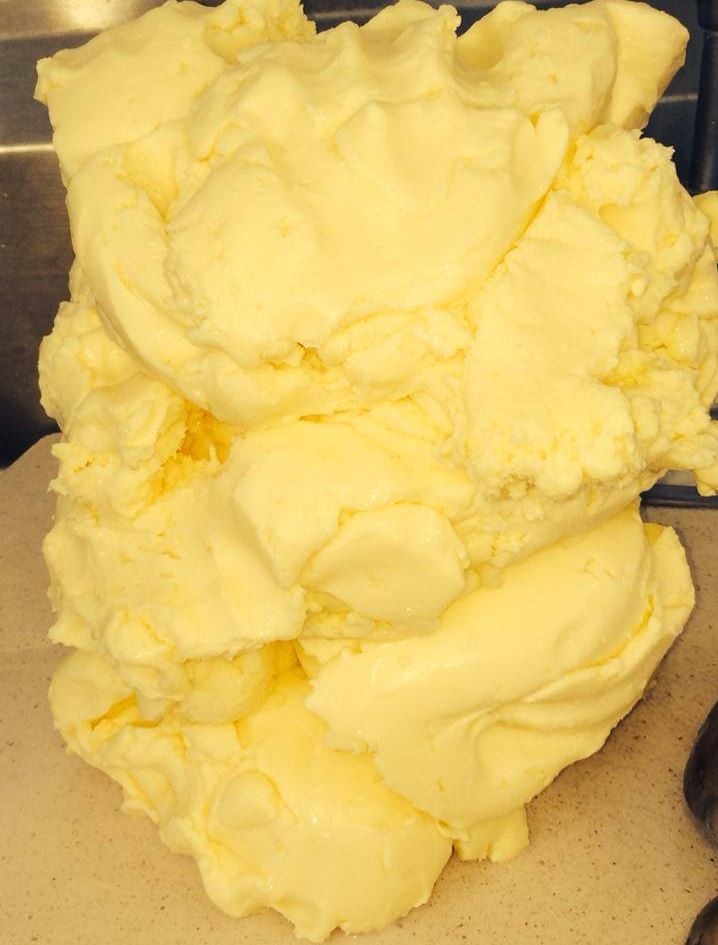Meet The Woman Who Makes The Butter For America's Best Restaurants
If the only butter you've ever had is the stuff in the supermarket dairy case, then you've really been missing out. That butter, which is essentially flavorless, doesn't hold a candle to the stuff coming out of say, Normandy or Ireland. But even that butter doesn't compare to what's being handmade by a dairy farmer named Diane St. Clair at her creamery in Orwell, Vermont, which is appropriately called Animal Farm Dairy (get it?). It's so good, in fact, that none other than Thomas Keller called it the best butter he's ever tried, and buys most of what's produced for his two renowned restaurants, The French Laundry and Per Se. As for the rest of it? It's sold to chef Barbara Lynch's Boston restaurants Menton and No. 9 Park as well as chef Patrick O'Connell's The Inn at Little Washington in Virginia. The (very small) amount that remains is sold at the Middlebury (Vermont) Natural Food Co-Op (for $23/ pound) and Saxelby Cheesemongers in New York, for a whopping $50/ pound.
So what makes St. Clair's butter so good? It all starts with the cows and the grass. "I use Jersey cows from the Channel Islands, whose milk has the highest percent of butterfat of any cow, about 87 percent," St. Clair told us. "The way the cows process keratins in the grass also gives the butter a bright yellow color."
In order to make her renowned butter, Diane starts by milking her 10 cows, adding the milk to a bulk tank, and chilling it down to below 40 degrees. After gravity separates it, she skims the cream from the top using a ladle and gently pasteurizes it. She then cultures the cream with her own buttermilk, which adds a bright and acidic tang to the finished product, and lets it sit for 24 hours before churning it. The new buttermilk is then drained away, and the butter is removed from the churn. St. Clair then hand-washes the butter and turns it on a marble slab until it reaches the desired consistency.
The cows used to create the butter graze in late spring, summer, and fall, and as the quality of the grass changes during the year, so does the flavor of the butter. "The butter really expresses the terroir of the land the cows graze on," St. Clair explained. "It has a grassy taste in the spring, and in the fall it has more of a wildflower, floral complexity."
If you want to try this butter, you'll need to go to one of the above restaurants, which happen to be quite expensive. Or you can try your luck at the Middlebury Food Co-Op, or at the New York cheese shop. We suggest you sign up to the shop's mailing list so you can be notified when they receive it. But as you can imagine, it sells out quickly!
